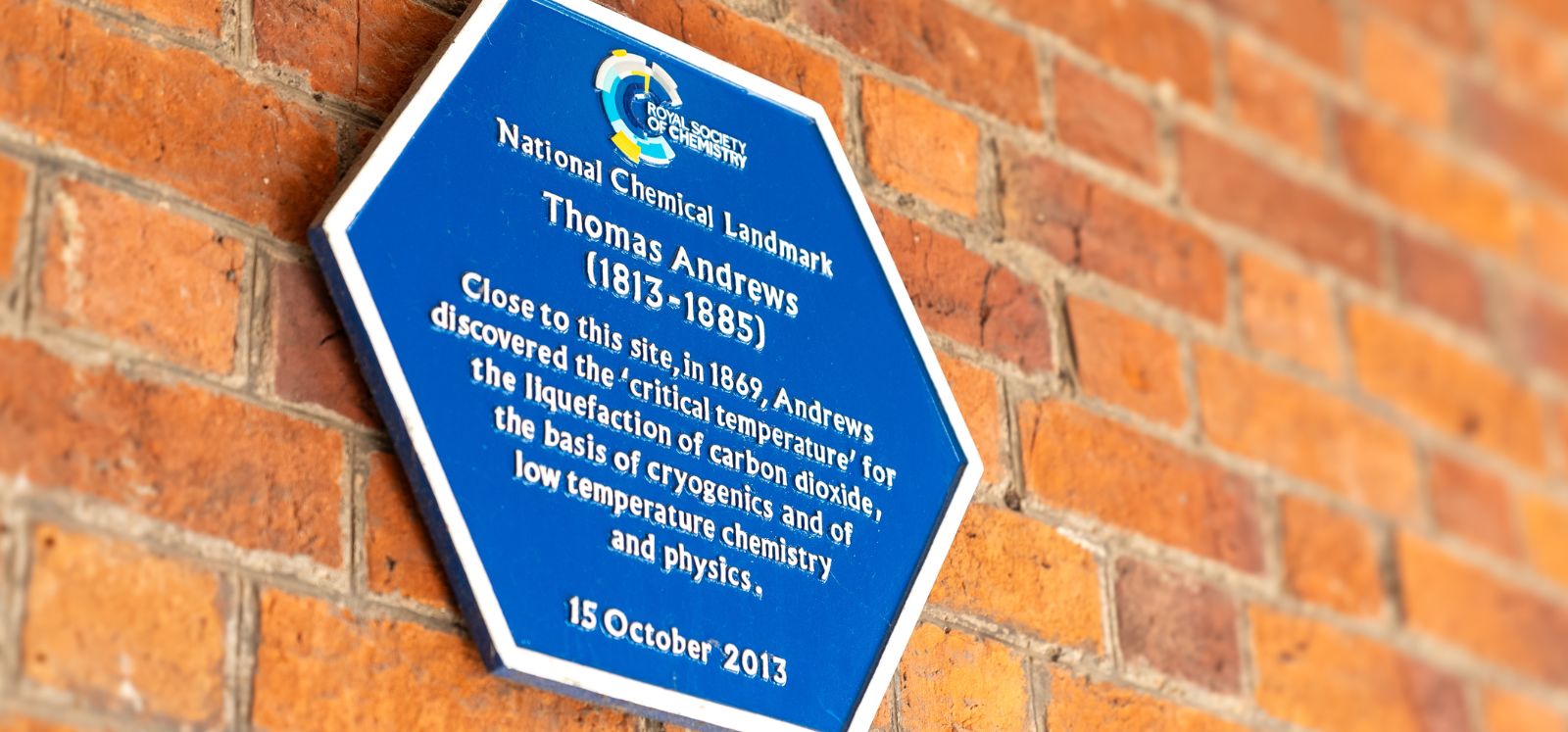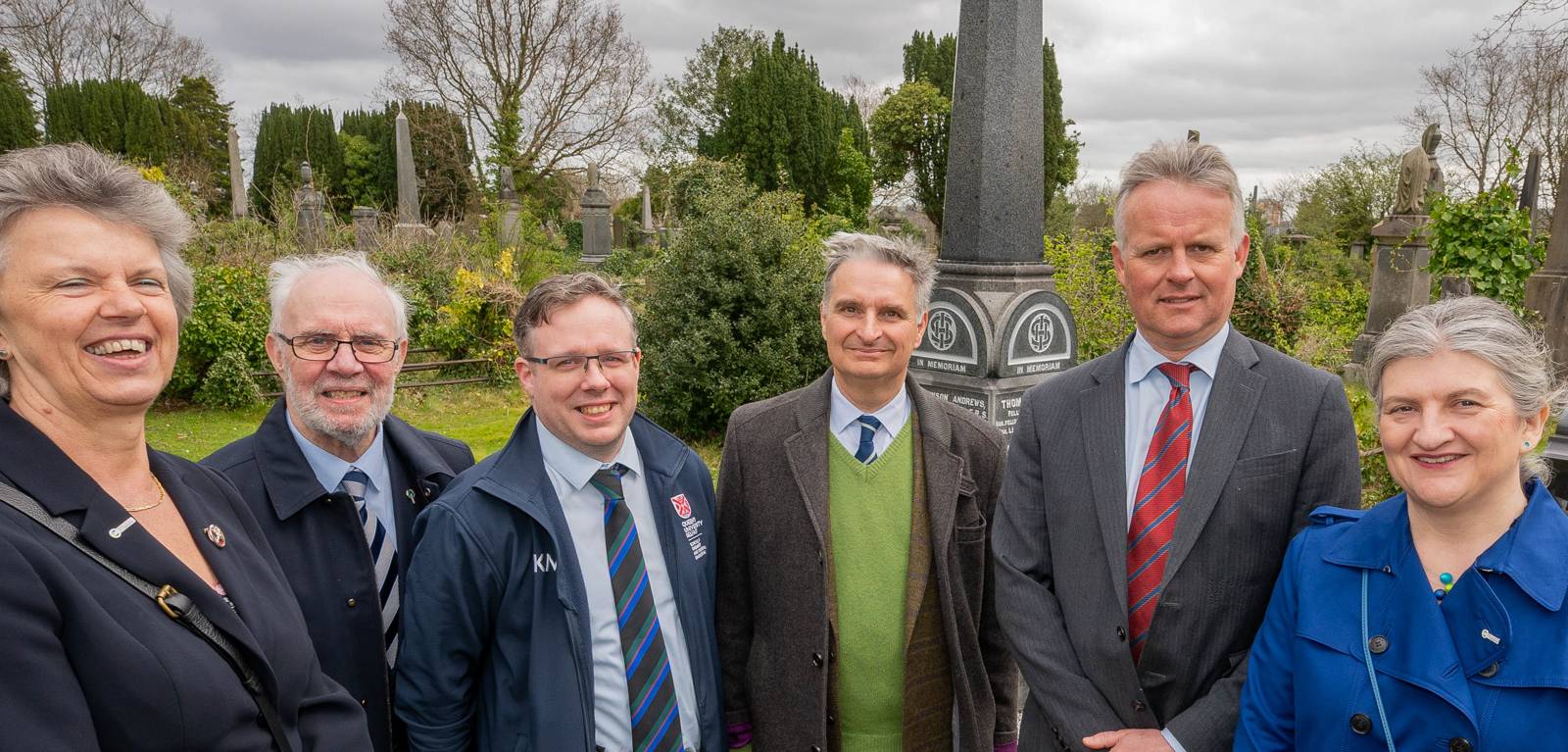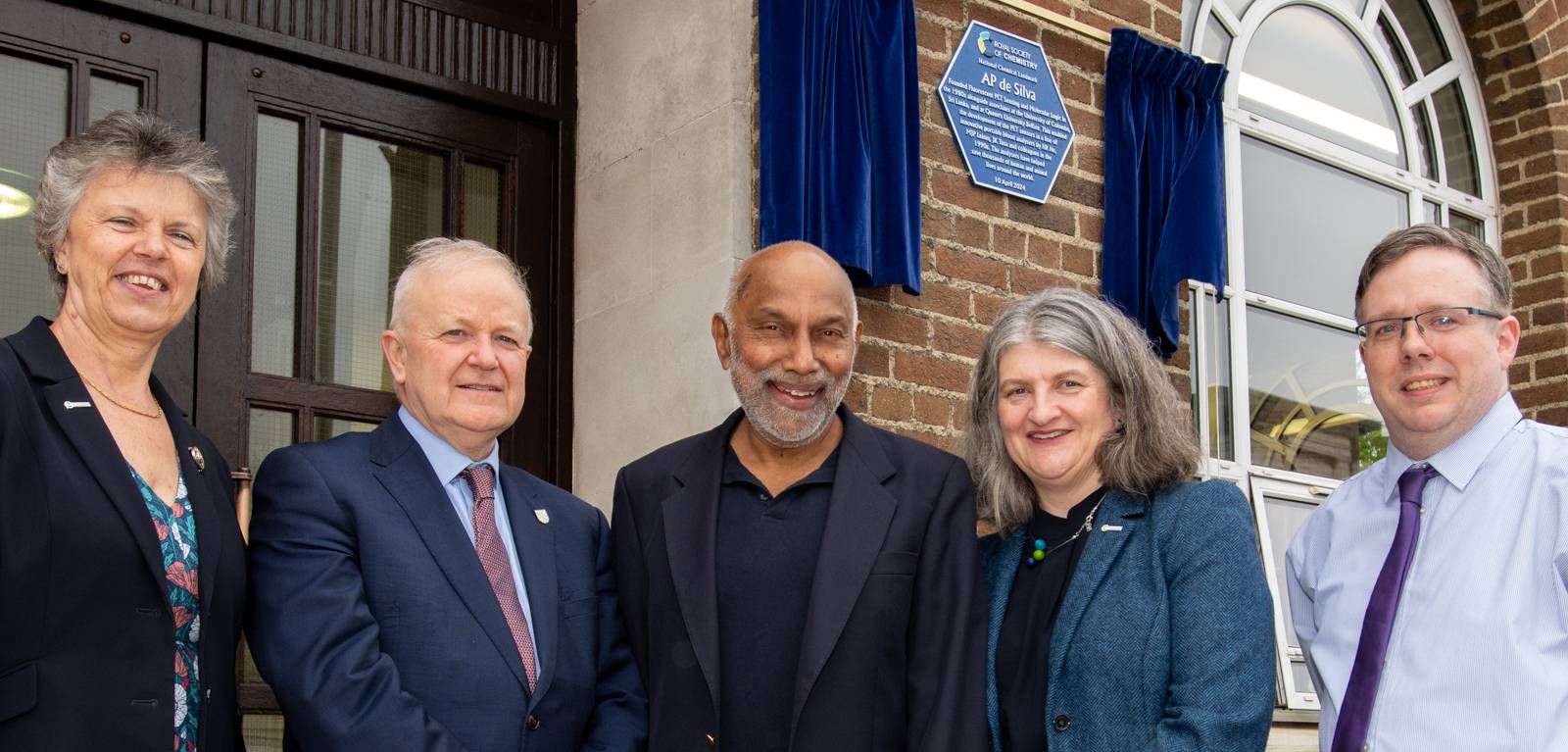BLOG: Celebrating Thomas Andrews: A founder of Queen’s and science in Northern Ireland
“We trace the rich chemical heritage of Queen’s to Thomas Andrews.”

A blog by Dr Kevin Morgan and Professor Steven Bell from Queen’s University Belfast’s School of Chemistry and Chemical Engineering
Last week, the Royal Society of Chemistry Northern Ireland Local Section held a Rededication Service for the grave of Belfast born Thomas Andrews, a significant figure in the history of Chemistry and of Queen’s University Belfast. This was funded by the RSC Local Section and a generous donation from Queen’s.

As academics of Queen’s and members of the RSC Local Section, this was a very important event for both of us, having been born in Northern Ireland (Steven is from Banbridge and Kevin from Dungannon). The opportunity to involve the RSC President, Professor Gill Reid, and RSC CEO, Dr Helen Pain MBE, arose as they were due in Belfast to unveil a National Chemical Landmark on 10th April honouring the work of our colleague, Emeritus Professor AP de Silva (an award for which Kevin nominated AP).

Queen’s is very proud of its connections to Thomas Andrews. In 1995, as part of Queen’s 150th Anniversary, a Laburnum tree was planted by Queen’s and the RSC in the Lanyon Quad, replacing an original tree that grew outside of Andrews laboratory on the main site [1].
In 2013, we were honoured to receive QUB’s first National Chemical Landmark, which was unveiled at the Lanyon Building, where Andrews conducted many of his experiments [2] (it would be 1894 before the campus expanded to include new chemical laboratories [3]).
Queen’s holds an extensive archive of Thomas Andrews memorabilia which includes apparatus, documents, correspondence (including letters from Michael Faraday) and photographs. It was wonderful to be able to visit some of the artefacts and share that experience with some of the Andrews family, who also attended the rededication of the grave on the 11th April in Belfast City Cemetery.
Maintaining the links to the foundation of our School, and indeed the University, is very important for Chemistry and Chemical Engineering, and to us personally. To be able to discuss that history with the Andrews family was humbling. The Andrews family were also present in 1995 for the replanting of the tree and in 2013 for the unveiling of the National Chemical Landmark. We hope that they will also be included as part of any Queen’s 180th Anniversary commemorations next year (2025).
We think it is very fitting that Thomas Andrews, the recipient of our 1st National Chemical Landmark, was remembered by the RSC Northern Ireland local section, just a day after the unveiling of our 2nd National Chemical Landmark for AP de Silva, connecting the past with the present and recognising that we trace the rich chemical heritage of Queen’s to Thomas Andrews.

Hooke (1820–1908); oil on canvas, 1879/80. Part of the University's
collection in the Great Hall.
Thomas Andrews and Queen’s College Belfast
Having studied mathematics under James Thomson (father of Lord Kelvin, whose statue stands close to our University’s Lanyon Building, in Belfast’s Botanic Gardens) at Royal Belfast Academical Institution (RBAI) until 1828, Thomas Andrews returned there to teach chemistry in 1835. In the intervening period Andrews had qualified as a MD and was a practicing physician while also working at RBAI [4].
Following the decision to supersede the programs of collegiate education at RBAI through the establishment of a new Queen’s University of Ireland, Thomas Andrews was appointed as the first Vice-President of the Northern College in Belfast in 1845 and helped to prepare for its reorganisation as Queen’s College, Belfast [4]. From 1847, Andrews was fundraising to establish soup kitchens to support those in need during The Famine [5].
When students were admitted in 1849, Andrews became a Professor of Chemistry and remained in this role and position of Vice-President until he retired in 1879 [6].
His tenure as Vice-President saw significant development of the campus – this included completion of what is now called the Lanyon Building in August 1849, which Queen Victoria and Prince Albert visited during their State Visit that same month [3]. This period also saw the building of the Lynn library (now the Graduate School) in 1866 and the campus’ first gymnasium in 1873 [3].
It was while at Queen’s College that Thomas Andrews published many scientific papers in different areas of thermodynamics and physical chemistry, including his work on the identification of ozone as an allotrope of oxygen [4] and the liquefaction of carbon dioxide [6] which included defining critical temperature/critical point [4].
His understanding of continuity of gas and liquid state was not only the fundamental basis for modern refrigeration [5], but also inspired the subsequent work of James Thomson (Lord Kelvin’s brother) – work which Andrews communicated at the November 1871 meeting of the Royal Society on Thomson’s behalf [4].
Andrews’ work on liquefaction of gases also influenced the equation of state developed by Johannes Diderick van der Waals [4], which is the basis of most modern equations of state that are still taught today worldwide, including at Queen’s by Kevin and others.
However, the work of Thomas Andrews at Queen’s extended beyond chemistry. It also encompassed University affairs and wider societal issues such as the duties of government to higher education and an 1867 publication entitled Suggestions for Checking the Hurtful use of Alcoholic Beverages by the Working Class [5].
Also in 1867 Andrews published a critique of the function and mission of a University, with special reference to the Queen’s Colleges [4]. This resulted in a supplementary charter to the Queen’s University of Ireland, completely changing the relations of the Colleges in Belfast, Galway and Cork with the University and enabling the Senate of the University to confer degrees on any person [4].
In 1870 Andrews also wrote about university reform, suggesting that women be admitted to the Queen's colleges [7]; though it was 1882 before women could attend Arts lectures [8] and 1883 before they could attend Science lectures [9]. It would be 1889 before the first female medical students were admitted [10].
In 1879 Thomas Andrews retired from Queen’s College due to his failing health, also the reason cited by long term collaborator Peter Guthrie Tait for Andrews declining a Knighthood in 1880 [5], though his Obituary in the Journal Nature hinted that he shared the opinion, and followed the practice, of his friend Michael Faraday, who’s religious views did not allow him to accept worldly honours [5,6].
His connection with Queen's College was commemorated by the establishment of an Andrews studentship in 1883 [4], and this continued after his death in 1885 and beyond the dissolving of the Queen’s University of Ireland and the establishment of the independent Queen’s University Belfast in 1908.
Event
Kevin is presenting a talk entitled “The History of Chemistry in Belfast: From Andrews to Zeolites” at the 9th EuChemS Congress in Dublin in July.
[1] Celebrating 150 years of Queen’s University, Belfast, Chemistry World, 24th September 2015
[2] Celebrating a founding father of science in Northern Ireland, https://www.rsc.org/news-events/articles/2013/10-october/celebrating-a-founding-father-of-science-in-northern-ireland/ Accessed on 8/4/2024
[3] A timeline of the Queen’s Story, https://www.qub.ac.uk/180/timeline/. Accessed on 8/4/2024
[4] Wisniak, J.; Revista CENIC Ciencias Químicas, Vol. 39, No. 2, pp98-108, 2008.
[5] Thorburn Burns, D.; RSC Historical Group Newsletter and Summary of Papers, No. 65, Winter 2014
[6] Anon, Obit, Nature, 33, 157-159, 1885
[7] Dicitonary of Irish Biography, https://www.dib.ie/biography/andrews-thomas-a0165 Accessed on 8/4/2024
[8] The Role of Women Podcast, Queen’s at 175 https://open.spotify.com/episode/5YbvSGLfz8RKfNvnWiLtZc?si=0IhfE1KhSSKB9XV9dnPR0g&nd=1&dlsi=615fb1d55824449f accessed on 8/4/2024
[9] The Women who Shaped Queen’s https://www.qub.ac.uk/student-blog/why-choose-queens/ThewomenwhoshapedQueens.html accessed on 8/4/2024
[10] History of The Medical School https://www.qub.ac.uk/schools/mdbs/Discover/History/#:~:text=In%201889%2C%20Miss%20Jean%20Bell,time%20on%20the%20University%20campus. Accessed on 8/4/2024